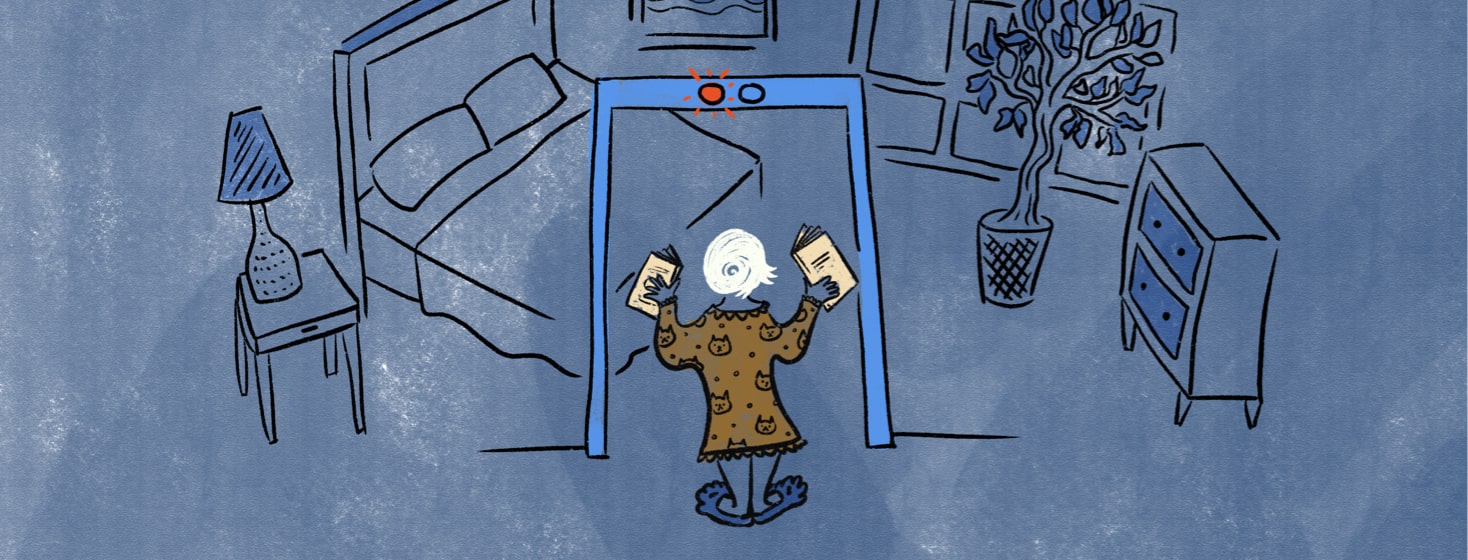My RLS Sleep Hygiene
Sleep experts and mental health professionals are always going on about sleep hygiene. For years, I ignored them.
One reason was that I like my bed and, when I was younger, my bedroom didn’t have many places to hang out besides my bed. I read in bed, wrote in bed, talked on the phone in bed, talked to my roommate from bed, watched TV on my laptop in bed, etc.
Some habits are hard to quit
As I grew up, got more space, and became more sensitive to sleep hygiene as it related to my sleep disruptions, I started listening to all those experts who said that you must be careful not to do anything in bed besides sleep (and sex).
I still loved reading in bed, though. I was one of those kids who got in trouble for staying up too late hiding under the covers with a flashlight and a novel. As an adult, I was getting in trouble with myself for staying up too late to read just one more chapter.
Taking sleep hygiene seriously
Once I realized that my wiggles and restlessness were not a result of a fault in my character but was actually restless legs syndrome, I started taking sleep hygiene seriously.
Now, I rarely, if ever, read in bed. If I’m in the middle of a novel or memoir, or really anything with a plot, I read on the couch. When I get sleepy, I go upstairs and sleep.
Sometimes I’ll keep a “bedtime book” on my nightstand. My current choice is The Book of Delights. If I’m in the mood, I’ll read one entry before bed. These take minutes and don’t demand too much mental energy.
No more distractions in bed
I no longer chat on the phone from my bed. That activity is, again, relegated to the couch. Same goes for writing. My bed is for sleeping. I only go into my bedroom for bedroom activities. I try to put away laundry quickly so the room doesn’t have too much clutter.
Creating my ideal bedroom environment
When I moved last summer, I made sure my bedroom was a place conducive to sleep and not much else. I don’t actually sleep in my house’s master bedroom. It’s my office. I sleep in a smaller bedroom with no extra furniture besides the bed and clothes storage. My lights are warm and the color palette in there is neutral, with a white comforter and curtains.
I usually sleep with my curtains open and the window open with a screen. The natural light and fresh air help me regulate my sleep so I wake up naturally. I have a nice tree view from my upstairs bedroom and a pothos plant on my dresser so I wake up with nature. The art is simple and comforting and not right in front of my face when I wake up. Instead, I faced my bed to a mirror that reflects the treescape outside.
Better sleep and fewer RLS symptoms
I try to go to bed early, and I don’t always succeed. However, I know from parenting that sleep begets sleep, so if I follow my own rules and set a bedtime for myself, I get better sleep and fewer restless legs symptoms.
Do you follow sleep hygiene practices? Have you made your bedroom more conducive to sleep? Share with us in the comments below!

Join the conversation